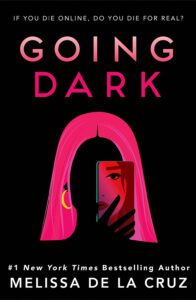My daughter jokes that I know every terrible thing that has ever happened to anyone on the planet. I have a morbid fear of parking lots, white vans, crowds, movie theaters, and any place where disaster or evil has struck. I’m not alone in my fear. Fear is something that the media encourages and covers—especially when a young girl goes missing. My new novel GOING DARK explores the phenomena of how the media decides which victims to cover. The media’s obsession with certain types of victims—white, photogenic young girls—has even been given a name “missing white women syndrome”—in that while certain victims of crime are reported on to minute detail, many other victims are ignored and fail to generate any interest or sympathy from the wider community.
The recent and very sad case of Gabby Petito is a textbook example of “white women syndrome” in that every detail of her last days, from the timeline of her death to the swath of photos of her reproduced in every media channel, was served up to an insatiable public. The case was even cracked with the help of an “internet detective” – someone went through their camera footage from the national park and found the white van that belonged to Gabby and Brian Laundrie. The fact that we know so much about this case, and how it was publicized to an extent that the public was able to help solve the mystery of her death truly struck me, especially when reading about other cases of missing women of color whose disappearances don’t merit the same media attention.
Without spoiling my novel, the book is about two disappearances: one being the type that we as a society pay attention to, and the other being the type that tends to go ignored. Seeing who generates sympathy and attention in death, as well as in life, is a chilling reminder that some of us matter more than others. Going Dark was written from my desire to pick apart this phenomenon and to write a story that would make us think again about what and who we value.
I am of Asian descent, an immigrant from the Philippines with Chinese and Spanish ancestry. And as an Asian-American, I’m always learning how my ‘place’ in society affects the way others treat me. I employed a young white man as my assistant once, and whenever he opened the door to our house, the people calling – the Fed Ex man, the Postmates delivery guy, the company dropping off tables for a party, would always call him “sir.” Spencer was thirty years younger than me, but he was treated with respect that I wasn’t afforded. It’s a respect that he earned by virtue of being white and male. At my daughter’s school, when my husband writes an email, the school secretary addresses him as “Mr. Johnston.” But when I write an email, I am always addressed by my first name. These are small observations that I have noted, but I don’t let it bother me too much. I have too much work to do.
But when the first instances of Asian hate crimes were reported in the news, it was too disturbing to process for me. Surely, I was still safe, walking around New York, a city I still think of as home. I didn’t want to acknowledge the fear, because it would mean I wasn’t safe in my own skin, wearing my own face. It was exhausting. And if I’m being honest, it was sometimes easier to live in denial rather than fear.
Since there was nothing that I could do to change who I was, I wrote a book. A book about the kind of boyfriend who is every girl’s ‘dream,’ and who turns out to be every parent’s nightmare. About a girl who isn’t quite who she is, and another girl who found out the truth too late. It’s also about a third girl who’s like us, sitting in front of our computers, digesting the news on our screens—who is drawn in by the stories of people whose seemingly perfect lives suddenly unravel.
The book is also about the pernicious nature of social media, how we begin to believe that everything that people put online about themselves is the entire truth about their lives. As someone who has a public Instagram, I am always amused by acquaintances who make assumptions based on my posts. Not everything in my personal life is made public, but it’s hard to communicate that what you see isn’t always what you should believe. Even on a small scale, I can see how rumors and stories grow from just a few online posts, the power of social media, and also the flaws of it.
Going Dark is a novel, not a thesis. It’s meant to be entertaining, but also to be eye-opening, thought-provoking. In the end, it’s my hope that one day as a society we come to a place where attention is paid to every victim, not just the ones who leave picture-perfect images online.
***


















